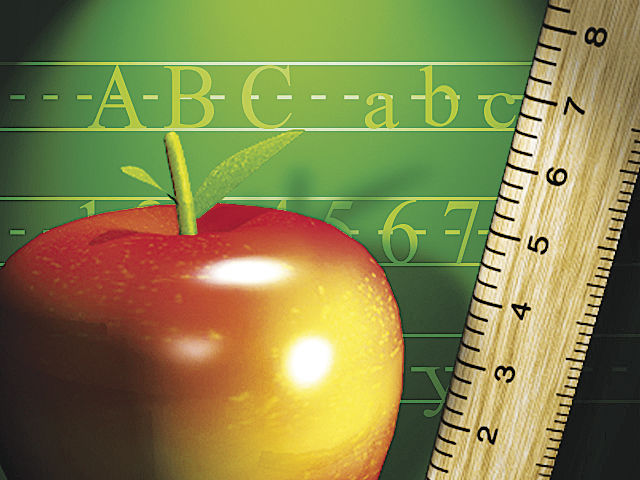EDITOR’S NOTE: This is another story in a series of articles on the Harlingen school district’s new teacher evaluation system.
HARLINGEN — It was just a big rock with some writing on it.
Scholars recognized Ancient Greek and a form of Ancient Egyptian writing, both saying the same thing. Oh, and there’s some Egyptian hieroglyphs, but we can’t understand it so let’s not waste our time any further.
If the people who examined the Rosetta Stone had been this clueless, we still might not understand those hieroglyphs.
It wasn’t enough they understood the Ancient Greek and the Egyptian writing. It wasn’t enough that the two passages on the stone discovered in 1799 were similar.
In order to tap into the full potential of the Rosetta Stone found in the Nile Delta, scholars had to take their knowledge to the next level. They had to use their understanding of ancient languages to finally decipher Egyptian hieroglyphs. This one “real-world” use of their knowledge opened a rusty door through which we could enter Ancient Egypt and explore her wonders. We’ve been exploring ever since.
So it is today. Educators are discovering or developing new teaching strategies and concepts all the time, encouraging students to discover their own Rosetta Stones.
The Harlingen school district’s 2014 Strategic Plan includes a directive to introduce “authentic learning” in the classroom. In authentic learning, students take the pure knowledge they’ve learned and apply it to real-world situations.
Algebra: “Why are we learning this?”
“It’s a skill,” said Veronica Kortan, administrator for organizational development.
“Until you see it used in a real life application, you aren’t going to understand it,” she said. “We use it every day. We apply it.”
Algebra is used to determine distance, volumes of containers and calculating prices. This doesn’t imply everyone is solving algebra equations as they perform these tasks, but the formulas are in play. Understanding such basic concepts will empower students to perform better in the workforce.
In the classroom
Teachers already have a head start on their teaching skills. Kortan said Harlingen teachers were found to be especially strong in the Instruction Domain and Learning Environment domains of the T-TESS, a new teacher evaluation system.
“Our teachers did very well with the classroom pieces,” she said with satisfaction.
More specifically, those classroom pieces referred to such details as adapting lessons to address individual needs of all students and using a broad range of instructional strategies. Teachers were also found to ask questions that piqued students’ curiosities. They also used effective routines and transitions in their classroom activities. Students were allowed some limited management of student groups.
The district has been promoting a broad range of teaching strategies, including collaborative learning in which several students work together on a project. Project-based learning involves several students working together.
In a positive classroom culture, a failed test is seen as a challenge to improve study habits or develop new teaching strategies. In such a culture, which offers trust and acceptance, students feel empowered to learn from their mistakes to enhance achievement.
The Montgomery County Public Schools website says that without a culture of acceptance and trust, students will use more energy on vigilance against attacks than on learning.
“A trusting environment empowers students to become accountable for their own learning and the learning of others,” says the website.
Perhaps the very act of creating a classroom culture is in itself a strategy. Within that strategy, students feel free to learn and take risks without fear of persecution. They have the liberty to troubleshoot a challenge and discover their own answers.
Growing pains
In this kind of classroom culture, failure is replaced with challenge. If a student attempting a challenge doesn’t achieve the desired result, it means they’ve encountered a new challenge. They’ve simply hit a bump in the road as they struggle to unlock their Rosetta Stones. Those bumps are just growing pains.
Jennifer Maldonado, teaching and learning specialist for the Harlingen school district, recently held a workshop about classroom culture called “Growing Pains.”
The workshop focused on changing a student’s perceptions about results. Students who can learn to view bad grades as challenges are more open to instruction. If they can discipline themselves to avoid going on the defensive when being corrected, they’ll succeed better in the workforce.
“It’s about someone with a fixed mindset versus someone with a growth mindset,” Maldonado said. “If we foster a growth mindset in students we can encourage them to continue to grow.”
Put another way, it’s about inspiring a student rather then conducting an inquisition.
In a positive classroom culture, students are more open to learning because they aren’t as worried about mistakes. Perhaps this is why Beatrice Cruz, who teaches fifth grade at Zavala Elementary, was able to encourage her students to speak up in class. She worked on asking better questions to elicit more responses. It worked.
“I allowed students to take more ownership of their learning,” she said. “We did a lot of collaborative group projects. I allowed students to become the teachers in certain cases in which they stood up and explained things to the classroom. That way they were able to engage a dialogue with their classmates.”
For the rest of this story and many other EXTRAS, go to our premium site, www.MyValleyStar.com.
Subscribe to it for only $6.99 per month or purchase a print subscription and receive the online version free, which includes an electronic version of the full newspaper and extra photo galleries, links and other information you can’t find anywhere else.




